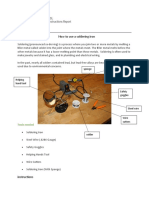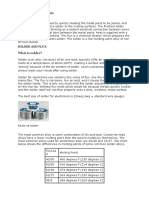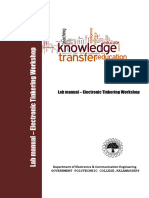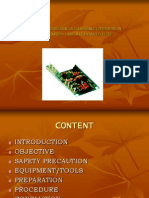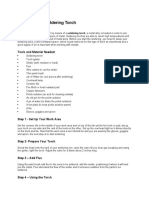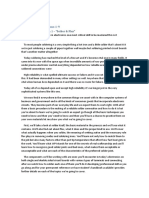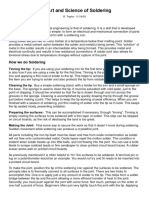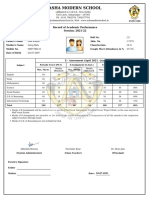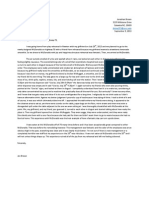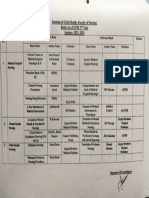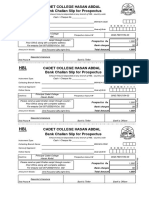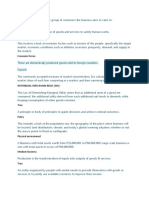0% found this document useful (0 votes)
61 views2 pagesSoldering On Wire Process
This document provides a detailed guide on the wire soldering process, outlining the necessary tools and materials, as well as a step-by-step procedure. Key steps include preparing and tinning the wires, joining them, applying solder, inspecting the joint, and insulating it. Safety tips and various applications of soldering in electronics and electrical assemblies are also included.
Uploaded by
shabbirCopyright
© © All Rights Reserved
We take content rights seriously. If you suspect this is your content, claim it here.
Available Formats
Download as DOCX, PDF, TXT or read online on Scribd
0% found this document useful (0 votes)
61 views2 pagesSoldering On Wire Process
This document provides a detailed guide on the wire soldering process, outlining the necessary tools and materials, as well as a step-by-step procedure. Key steps include preparing and tinning the wires, joining them, applying solder, inspecting the joint, and insulating it. Safety tips and various applications of soldering in electronics and electrical assemblies are also included.
Uploaded by
shabbirCopyright
© © All Rights Reserved
We take content rights seriously. If you suspect this is your content, claim it here.
Available Formats
Download as DOCX, PDF, TXT or read online on Scribd
/ 2


